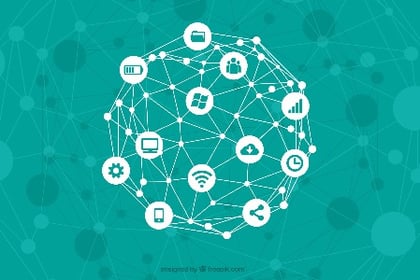Present Blog – IT Thought Leadership
Blog Present-IT thought leadership
Blog Present-IT thought leadership
IT thought leadership blog for CIOs and CTOs in Canada seeking resources to drive IT as a business contributor: hybrid cloud, infrastructure, managed services and security and IT recruitment.
 Many companies are not concerned about the management of IT assets as much as they should be. However, having an overview of all your company’s IT assets is essential for the planning and well-functioning of your present and future operations.
Many companies are not concerned about the management of IT assets as much as they should be. However, having an overview of all your company’s IT assets is essential for the planning and well-functioning of your present and future operations.
In addition to using your IT assets to its maximum, the appropriate IT asset management improves your organization’s efficiency and performance while minimizing costs. Furthermore, knowing all the components of your IT systems, including the manufacturer’s maintenance contracts, allows you to solve problems faster and more efficiently while reducing risks.
A better understanding of IT asset management
The management of IT assets offers a global view of your IT equipment. It consists of good practices combining the financial, contractual, inventory, and planning aspects. The management of IT assets optimizes your products’ life cycle and makes decision-making easier when it comes to your IT systems.
To summarize, IT assets management helps you understand:
- The equipment and software used
- How they are used
- Their maintenance costs
- The warranty expiration date
- The maintenance contract expiration date
- When they were added to the inventory
Advantages and associated benefits
The management of assets is generally a low priority for companies because it requires a lot of research in the beginning, tracking of assets, and frequent updates. But implementing the right tools can simplify much of the work.
A better management of life cycles
The first advantage of good asset management is the ability to monitor equipment and software purchases. It’s useful for a company to know which IT equipment needs to be changed at the end of a certain period and the dates of the renewal of licences. This information will help IT teams decide if they must replace equipment or update the version of an operating system or software, and make sure the equipment used is always under maintenance.
Better cost planning
The centralized management of assets allows you to list the equipment and software your organization uses, which in turn makes for better budgetary planning. By tracking the inventory of IT assets, it becomes easier to plan future expenses while maximizing the use of existing assets. If you don’t know the extent of your IT equipment and software, it is very difficult to budget for purchases. Worse still, you could end up paying for equipment or maintenance contracts you don’t need.
Better compliance management
It is possible to keep the equipment and software inventory up-to-date using specialized tools. This allows you, among other things, to provide reports to your auditors showing things like the presence of an up-to-date antivirus in the whole environment.
These tools can quickly detect the presence of dangerous or unauthorized software, such as games, malicious software, etc.
The road to the automation of management using managed services
Many companies manage their IT assets manually, sometimes using Microsoft Excel, which significantly increases the risk of errors, oversights, and inconsistencies. IT managed services offers a much more simple and efficient alternative. In addition to providing a detailed list of the entire infrastructure’s components, the IT inventory is powered by real time detection of hardware and software assets.
Here is what managed services can do for you:
- Equipment assets:
- Detailed inventory of equipment
- Warranty follow-up
- Maintenance renewal follow-up
- Detection of theft and loss of equipment
- Detailed monthly report
- Software assets:
- Detailed inventory of software by system
- Detection of unauthorized software
- Maintenance renewal follow-up
- Detailed monthly report
Furthermore, operational problems and security vulnerabilities can be detected earlier with automated monitoring. In case of equipment failure, the managed services provider ensures the problem is fixed and deals with the manufacturer if needed.
Conclusion
The biggest risk run by companies who are not aware of their IT assets is to find themselves with equipment that isn’t under a maintenance contract.
When the system fails, it’s not the time to check if the device is under warranty or if the software is under maintenance. The cost of getting support from the manufacturer in such cases is usually prohibitive, and the time needed to stabilize the situation adds to the impact of the failure.
By entrusting the management of IT assets to a managed services partner, it will be easier for you to operate your IT more efficiently. Of course, implementing such a practice will require some collaboration on your part, but if you understand the importance of these advantages, you will agree that the effort is well worthwhile!
About Blog
The right use of technology addresses business challenges and drives business growth in all areas of an enterprise. We hope this blog will offer insight into developing strategies and tactics to enable you to identify those key drivers of growth and keep pace with and anticipate the rapid technology change of today.
Posts by Topic
- IT infrastructure (116)
- IT security (92)
- IT Innovation (59)
- Trends (51)
- Cloud (47)
- Managed services (46)
- Mobility (38)
- Digital transformation (29)
- CIO/IT leaders (28)
- Events (28)
- News (23)
- Microsoft 365 (17)
- Security (17)
- IBM (16)
- Disaster recovery (DR) (14)
- High availability (12)
- Recruitment (12)
- Storage (12)
- Big Data (11)
- Collaboration (11)
- AI (9)
- Case study (9)
- Office 365 (9)
- BYOD (8)
- Customer Experience (8)
- Hybrid Cloud (7)
- Current events (6)
- SAP Hana (5)
- Business intelligence (BI) (4)
- Converged infrastructure (4)
- Convergence / Hyper-convergence (4)
- Virtualization (4)
- Copilot (3)
- Future of retail (2)
- Retail (2)
- trend (2)
- Backups (1)
- Beacon (1)
- Blog Migrations (1)
- Contests (1)
- Infrastructure TI (1)
- Innovation TI (1)
- IoT (1)
- MDM (1)
- Stockage (1)
- Virtualisation (1)
- blockchain (1)
- cio (1)
- replication (1)
- Étude de cas (1)


